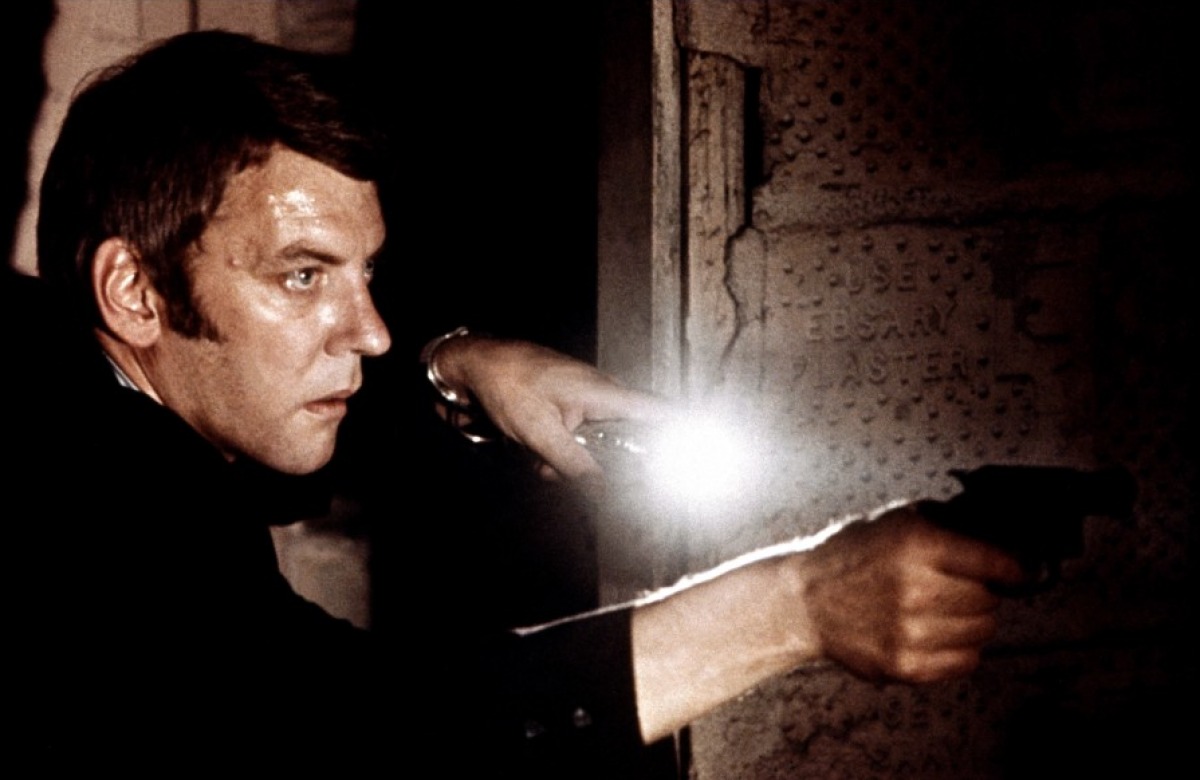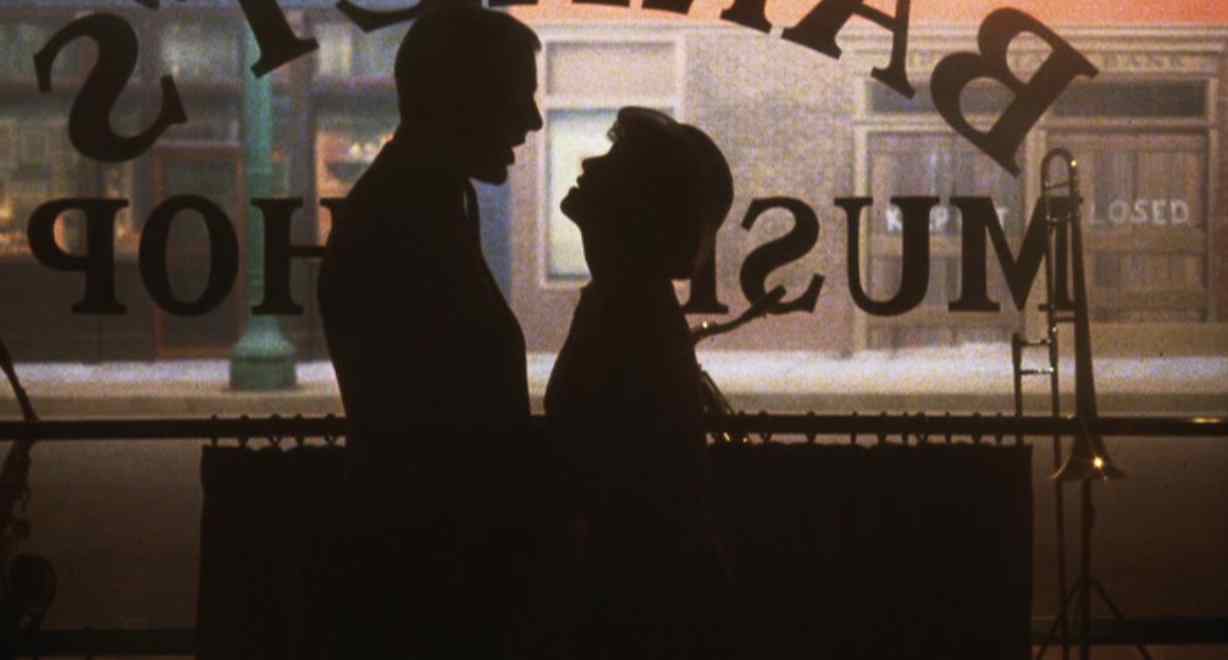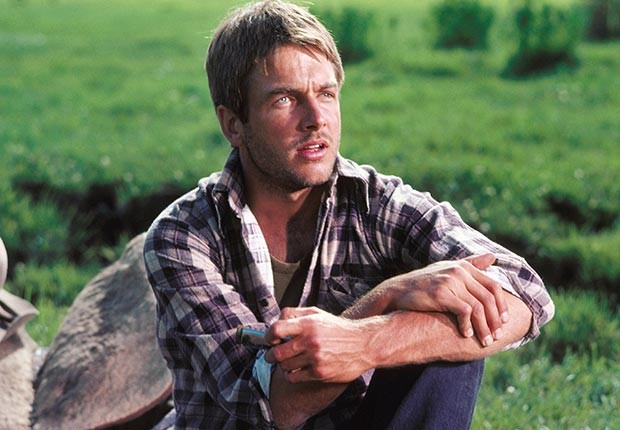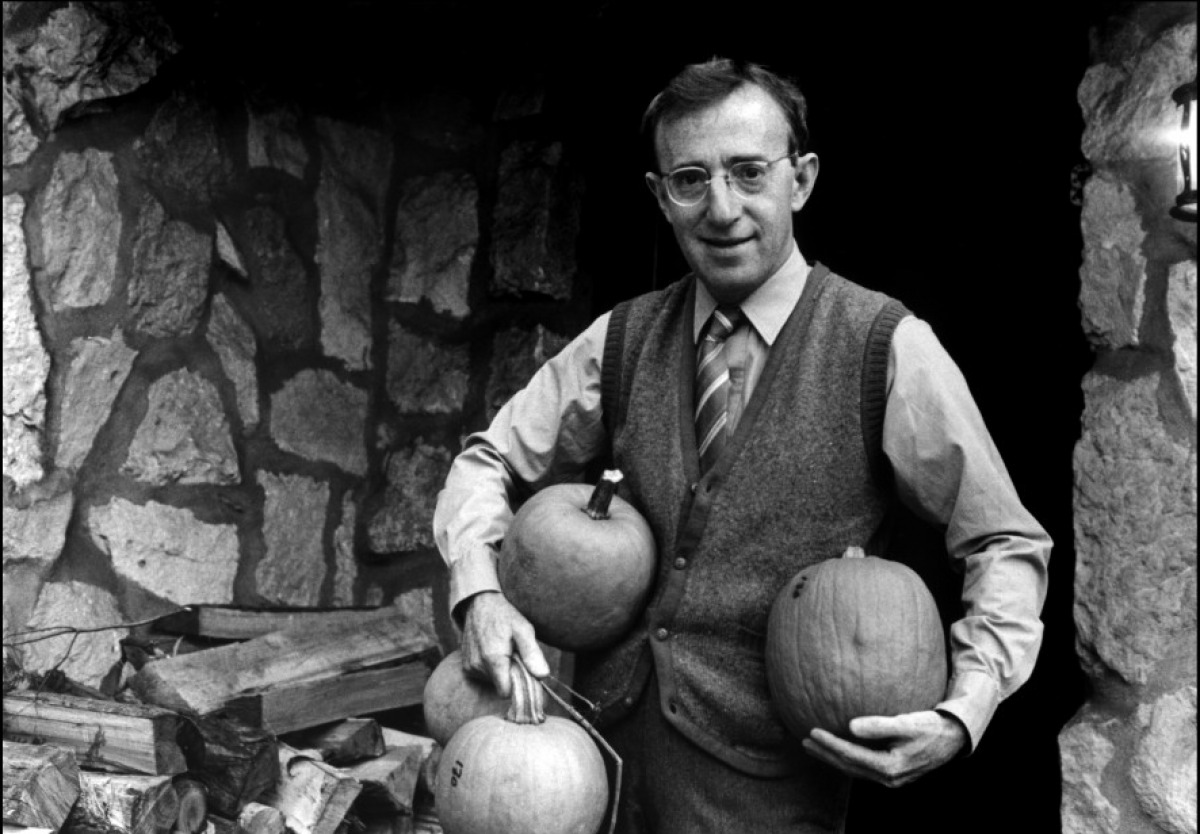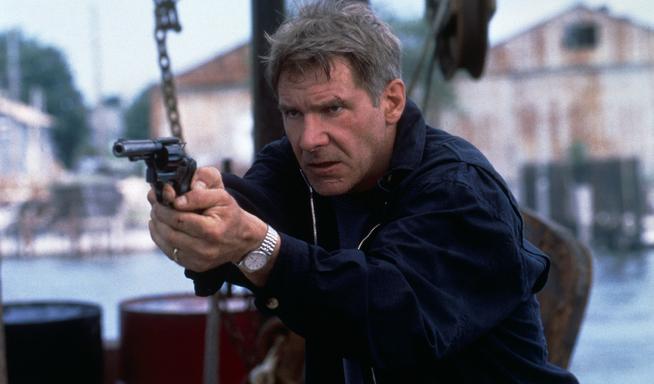6. Klute
Reteaming with Alan Pakula yet again for another intensely dramatic thriller, Klute is a sketchy, seedy, slow-burn piece of filmmaking that envelopes the viewer in shadowy paranoia, and features some of the best use of literal cinematic darkness that’s ever been put on screen.
Willis literally crafted a film born out of shadow and the night; his moniker “The Prince of Darkness” couldn’t have been more spot-on in this film, as there are shots that look like they contain 10 different shades of black. And in tandem with that beyond creepy musical score by Michael Small, the visual language of the film becomes even more unnerving and unexpectedly jarring.
Jane Fonda was super sexy and totally riveting to watch, with Donald Sutherland doing solid if subdued supporting work; this was Fonda’s movie all the way and she really knocked it out of the park in a role that won her Best Actress at the Oscars. The noir-inflected screenplay by Andy and David Lewis allowed for some great monologues for Fonda, while the film had to be considered a triumph for cinematic feminism back in 1971.
Roy Scheider delivered colorful character work, and as usual, the well-informed and steady hand of Pakula’s directorial hand can be felt at all times, and it’s abundantly clear that he and Willis severely connected on an artistic level.
7. Pennies from Heaven
Pennies from Heaven is a continually underrated film, featuring Steve Martin in his first dramatic role, with a stellar supporting cast including Christopher Walken, Bernadette Peters, and Jessica Harper. The film was a massive theatrical bomb, as it followed the Martin blockbuster comedy The Jerk, and audiences probably weren’t ready to accept him in a lavish and ambitious musical where he was being asked to be taken seriously.
Directed by Herbert Ross and written by Dennis Potter, Pennies from Heaven allowed Willis to make some bold stylistic decisions as an artist, as he deftly balanced the bleakness of the Depression era and the characters’ unhappy lives with exciting and brightly colored musical set-pieces that take on a fantastical/dreamlike quality.
With the various characters breaking into song and dance all throughout, smart framing and rhythmic camera moves were required, and in this department, Willis made the film light on its feet while still grounding it in a hard and firm style that stressed the trappings of noir and Chicago Art Deco flourishes. One of the more unsung gems from the 1980’s, this is a film that’s ripe for rediscovery, and further underscores the range of talent that Willis exuded as a craftsman.
8. Comes A Horseman
Willis and Pakula reteamed for a project that feels a bit out of their comfort zone on initial inspection, but upon actual viewing, Comes a Horseman is a delightful piece of work that set to demystify the genre. Certainly not a traditional Western but set in the American West of the 1940’s, the narrative pivots on two ranchers (James Caan and Jane Fonda) who operate a small farm and who become threatened by economic hardships and the greedy plans of a local land baron (Jason Robards).
Fonda was at her career peak when she signed on for this post-modern, pseudo-revisionist genre item, having just won an Oscar for Coming Home, and the film reunited her with Pakula, who had directed her in Klute, which was the film she won her first Oscar for, as well as Robards, who had co-starred with her in the 1977 film Julia.
Willis and Pakula brought a more simple visual style to the film than one might expect, and while the two talents certainly paid respect to the genre that they were working in, they opted for a more reserved aesthetic, stressing striking, yet unadorned widescreen compositions as opposed to anything fancy or more ostentatious; there’s visual sweep to the imagery but at the same time one gets the sense that Willis was interested in subverting expectations, even while the filmmakers tip their hat to iconic staples like Red River.
9. Zelig
One of the most aesthetically heightened films on Willis’ resume is Woody Allen’s Zelig, and it’s on this film that Willis would receive his first-ever Oscar nomination. Simply put, this film is a cinematographer’s dream come true, as the narrative offered up nearly every stylistic chance for a technician to feel truly unleashed.
His highly inventive work on this film, which effortlessly combined various film aging techniques, bluescreen compositions, and old-fashioned stills photography, all in an effort to credibly place the film’s main character, played by Allen, into a virtual archive of popular images from 20th century events and happenings.
The film was shot and narrated in the style of 1920s black-and-white newsreels which were then intertwined with archival footage and re-enactments from real historical events, and also included color segments from the present day.
This was years before computers and CGI would make these stylistic endeavors easier and more readily seamless, so it’s even more impressive now to see what Allen and Willis were able to create in this hilarious, touching, and extremely unique mockumentary that feels like one of Allen’s more under discussed efforts on his endless filmography.
10. The Devil’s Own
The Devil’s Own is a very underrated action thriller that got a bad rap at the time of its initial release. It had all sorts of production problems and in-fighting yet it’s hard to understand why so many critics seemed to have so many issues with the finished product. Despite the creative differences and battles between the key collaborative parties, the film is thoughtful, adult-minded entertainment, and as usual for a film with Willis behind the camera, looks absolutely fabulous in a very low-key fashion.
Harrison Ford and Brad Pitt brought mega star-wattage and they shared terrific chemistry together even though apparently they didn’t enjoy working with each other. The beautiful Natascha McElhone was a true revelation here, and Treat Williams smarmed it up big time as the chief baddie.
Confidently directed by Alan Pakula, sensitively written by Kevin Jarre and David Aaron Cohen, and beautifully shot by Willis with a great James Horner score, this is a film of ambiguous moral decisions and realistic family drama played at just the right pitch. The film boasts one of the absolute best fist-fights ever put on film, with the camerawork smartly covering the action in a clear-cut fashion, with each punch landing for maximum impact, with Willis favoring chilly, earthy color tones and sharp framing.
From the starkly violent opening moments all the way to the pained conclusion, The Devil’s Own served as a further reminder of Pakula’s innate talent at telling humanistic, intelligent, thought provoking stories about flawed yet redeemable characters, while serving as the final film on both men’s legendary filmographies.
Author Bio: After spending close to a decade working in Hollywood for the likes of Jerry Bruckheimer, Tony and Ridley Scott, and Gary Ross, Nick Clement has taken his passion for film and transitioned into a blogger and amateur reviewer. Some of his favorite filmmakers include Michael Mann, Martin Scorsese, Tony Scott, Steven Soderbergh, Werner Herzog, Terrence Malick, and Billy Wilder, while favorite films include The Tree of Life, Goodfellas, Heat, Back to the Future, Fitzcarraldo, Schizopolis, The Counselor, and Enter the Void. His latest venture, Podcasting Them Softly, finds him tackling new ground as an entertainment guru, with a focus on filmmaker interviews and written analysis.
